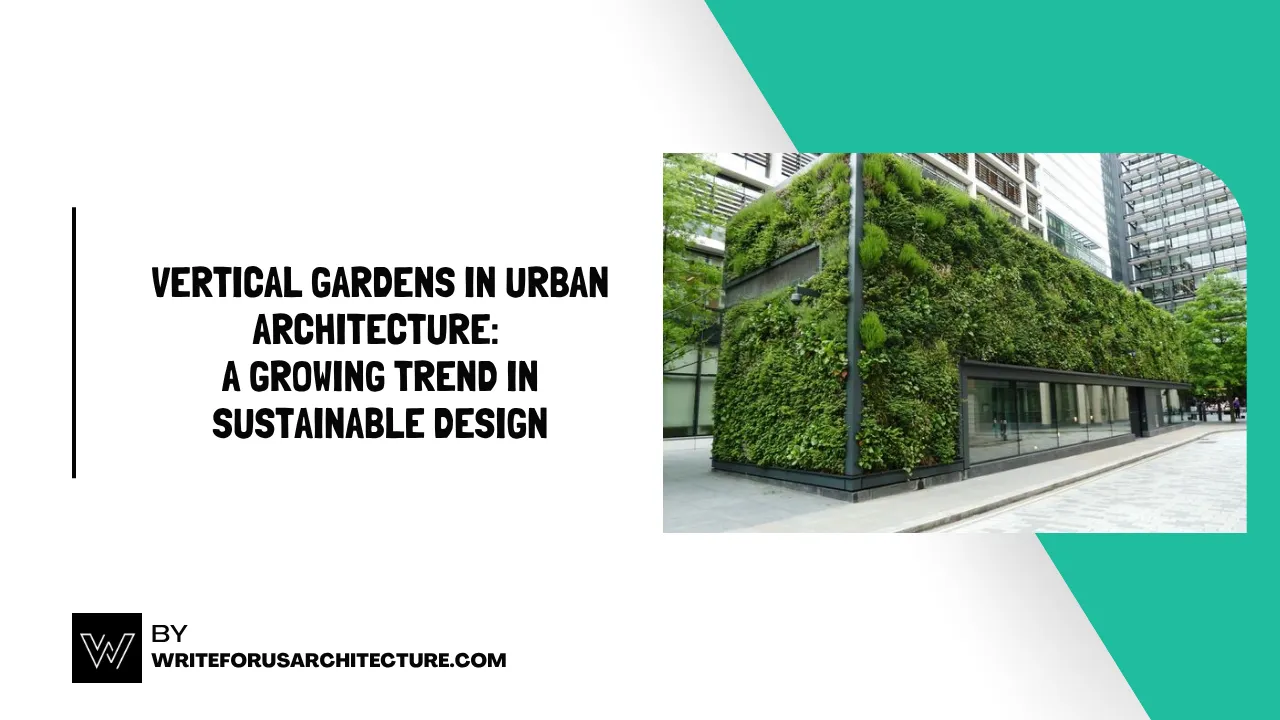In the face of climate change and rapid urbanization, architects and city planners are reimagining how we interact with the built environment. One of the most compelling innovations is the rise of vertical gardens, lush, living walls that merge greenery with architecture. This eco-conscious design trend not only adds beauty to concrete landscapes but also plays a key role in combating pollution, reducing urban heat, and promoting biodiversity. As cities become denser, these green installations offer a refreshing solution, turning steel and glass facades into breathing ecosystems. Let’s explore how vertical gardens are reshaping urban architecture and paving the way for sustainable living.
The Evolution of Urban Spaces
Cities are growing faster than ever, with more than half the world’s population now living in urban areas. As buildings climb higher and public green space becomes limited, the need for innovative and space-efficient solutions has never been greater. Enter the concept of vertical gardens, a dynamic response to this spatial challenge and a visual testament to how modern architecture can harmonize with nature.
Unlike traditional gardens that require horizontal space, vertical gardens utilize vertical surfaces, such as building facades, fences, or interior walls, to support plant life. This smart utilization of space allows dense urban centers to reclaim lost greenery and restore ecological balance in ways that were once thought impossible.
Why Vertical Gardens Are Gaining Popularity
The growing interest in vertical gardens is fueled by a mix of environmental necessity, aesthetic appeal, and technological advancement. Architects and developers now recognize that sustainability is not just a buzzword but a vital element of future-ready design. From commercial skyscrapers to residential apartment blocks, green walls are becoming a standard feature rather than an exception.
One major factor driving this trend is public awareness. Urban dwellers are increasingly drawn to green, breathable spaces that enhance well-being. Living in proximity to greenery has been shown to reduce stress, improve air quality, and elevate overall happiness, benefits that are difficult to ignore in a world craving more balance between nature and modernity.
Environmental Benefits at the Forefront
Vertical gardens are not merely decorative; they serve a functional role in improving environmental conditions. These living systems help reduce the urban heat island effect by naturally cooling the air around them. Plants absorb sunlight and trap dust particles, reducing the overall temperature of buildings and the need for artificial cooling.
Furthermore, vertical gardens act as natural air purifiers. Through the process of photosynthesis, plants absorb carbon dioxide and release oxygen, contributing to cleaner, more breathable air in heavily polluted cities. The integration of such systems helps mitigate some of the damaging effects of urbanization, such as increased carbon emissions and deteriorating air quality.
Enhancing Building Efficiency and Longevity
From an architectural perspective, vertical gardens offer multiple benefits beyond environmental impact. One notable advantage is their contribution to building insulation. These installations create a protective layer that shields structures from direct sunlight, rain, and wind. As a result, buildings require less energy for heating and cooling, leading to significant reductions in energy bills and carbon footprints.
Moreover, vertical greenery protects building surfaces from erosion and weathering, effectively extending the life of construction materials. In the long term, this can reduce maintenance costs and help preserve the aesthetic value of buildings, especially those in harsh urban climates.
Biodiversity in the Concrete Jungle
Vertical gardens also play a pivotal role in supporting urban biodiversity. As green habitats become scarce in cities, birds, butterflies, and beneficial insects struggle to find nesting grounds and food sources. Green walls provide an alternative refuge, allowing flora and fauna to thrive where they otherwise wouldn’t.
These installations can be customized with native plants, herbs, or even edible crops, encouraging a form of urban agriculture. This not only boosts food security but also educates city residents about sustainable food practices, promoting a more self-sufficient urban lifestyle.
Interior Design Meets Ecology
The influence of vertical gardens isn’t limited to exterior walls. Interior green walls are gaining traction in both residential and commercial spaces. From corporate offices to shopping malls and hotel lobbies, these verdant installations bring a sense of calm and serenity indoors.
In workplaces, interior green walls have been linked to improved employee productivity and reduced stress. In hospitality and retail, they enhance customer experience by creating visually appealing, refreshing environments that foster relaxation and encourage longer visits. Additionally, they contribute to better indoor air quality, which is increasingly important in post-pandemic architectural thinking.
Technological Innovations Driving Growth
The success and longevity of vertical gardens depend heavily on advances in technology. Modern systems use automated irrigation and nutrient delivery mechanisms to ensure plants receive the right amount of water and nutrients. Sensors and IoT (Internet of Things) devices monitor soil moisture, temperature, and plant health, optimizing growth conditions while reducing human intervention.
Some vertical gardens also incorporate hydroponic or aeroponic growing techniques, allowing plants to grow without soil. These soilless systems reduce mess and maintenance, making them ideal for indoor use or settings where soil-based growth is impractical.
Challenges and Considerations
Despite their many advantages, vertical gardens are not without challenges. Installation costs can be high, especially for larger projects with complex irrigation systems and structural supports. Maintenance, though simplified by technology, still requires regular oversight to prevent pests, disease, or system malfunctions.
Another consideration is plant selection. Designers must carefully choose species that are well-suited to the local climate and the specific conditions of the wall (e.g., sunlight exposure, wind, humidity). Poor planning can lead to plant failure and increased maintenance costs, undermining the sustainability benefits these gardens aim to provide.
Iconic Examples Around the World
Several world-class structures have already embraced vertical gardening, demonstrating its viability and aesthetic potential on a grand scale:
- One Central Park, Sydney, Australia: This mixed-use residential building is covered in a vertical garden designed by French botanist Patrick Blanc. It features over 35,000 plants and incorporates mirrored panels to reflect sunlight onto shaded areas.
- Bosco Verticale, Milan, Italy: Known as the “Vertical Forest,” this pair of residential towers integrates more than 900 trees and thousands of shrubs, reducing CO₂ emissions and enhancing urban biodiversity.
- Museo del Acero, Monterrey, Mexico: This museum uses vertical gardens to soften its industrial aesthetic and to reflect the region’s push toward green development.
These examples illustrate how vertical gardens can transform the identity of buildings, making them landmarks of sustainability and innovation.
Looking Ahead: A Greener Urban Future
As the world continues to grapple with climate change, resource scarcity, and mental health crises linked to urban living, solutions like vertical gardens will likely become integral to future city planning. More governments and municipalities are recognizing the importance of integrating green infrastructure into zoning laws, sustainability certifications, and public incentives.
Architectural education is also evolving to prioritize ecological design, ensuring that future professionals are equipped to implement sustainable solutions like vertical gardens effectively. This shift in mindset, from conventional, extractive construction to regenerative design, represents a hopeful direction for the planet’s urban future.
Final Remarks
Vertical gardens are more than a fleeting design trend; they are a transformative force in modern urban architecture. By turning blank walls into green canvases, they offer tangible benefits for the environment, public health, building performance, and urban aesthetics. As technologies improve and awareness grows, these living structures will continue to sprout across skylines, helping cities breathe easier and live greener. Embracing this innovative fusion of nature and design is not just smart—it’s essential for building the sustainable cities of tomorrow.

